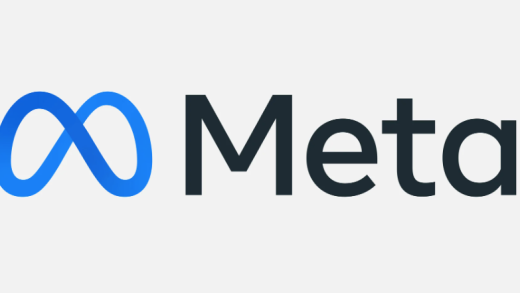Data is growing rapidly in every sector.
Big data, cloud computing, Internet of Things, and data science are the chief trending technologies that are deriving innovation and transformation throughout the world. Though all these technologies differ from each other in several aspects, it’s hard to talk about one without the other.
Big data and data science are closely entwined in such a way that there is a myth about both being the same. While data science deals with data cleansing, data preparation, and data analysis, big data is used for analyzing insights which will be used for better decision-making and strategic business moves.
Significance of big data: the current scenario
The world is increasingly becoming a digital space. Enterprises deal with huge numbers of structured and unstructured data every day. The following graph, which is a result of a survey conducted by Dresner Advisory Services, explains the big data adoption rate among industries.
Clearly, every industry across the world is adopting big data in their mainstream.
How do top MNCs use big data?
Enterprises must address their continuously growing data environments to identify new and existing value sources. They must identify the value which they can extract from the repository of data with the help of analytics. Below are the examples of top MNCs making huge benefits using big data:
- Securities and Exchange Commission uses big data technologies to monitor financial market activities and also catch illegal insider trading activities in the financial markets.
- Top financial firm Morgan Stanley is using Hadoop to store and analyze data. This provides a better portfolio analysis and predicts the impact of global events on financial markets.
- Telecom experts such as Vodafone and AT&T use big data Analytics for customer experience management and network capacity planning and optimization.
- Netflix is successfully using big data to predict its viewers’ interests by using sophisticated algorithms. It analyzes the interests of its 74.76 million worldwide viewers.
- FDA (Food and Drug Administration) uses big data to detect and study the patterns of food-related illnesses and diseases.
- The US intelligence agency, NSA (National Security Agency) uses big data Analytics to prevent terrorist activities and detect cyber-attacks.
Big data: the multi-V model
The fundamentals of big data are explained with the help of a multi-V model:
Big data and analytics
To put it in simple words, analytics means detecting unusual patterns in data that quantitatively benefits the business. Analytics is a vast domain that optimizes business functions, roles, processes, and performance. Companies are developing agility, flexibility, and precision to perceive a new ecosphere of growth. It enables organizations to manage enormous data, sustain competition in the market, manage risk, and enhance customer centricity. The analytics value chain given below explains the process from data management to decision deriving.
- Use primary and functional tools and techniques to extract relevant data from big data sources.
- Applications for analytics vary from historical reporting to real-time decision-making. Perform analytics based on the transactions and conclude with a behavioral pattern.
- Use the insights that are produced in the above process to derive an organizational change.
Big data and its big benefits
Big benefits of big data cut across every industry. It has grabbed widespread attention in current technologies like analytics, cloud-based technologies, digital channels, and data visualization. Though the concept of big data is getting familiar in the market, the adoption and usage is not yet widespread. The Vice President of Microsoft, Susan Hauser, says:
big data absolutely has the potential to change the way governments, organizations, and academic institutions conduct business and make discoveries, and it’s likely to change how everyone lives their day-to-day lives.
The Third Eye – Data Visualization: Organizations worldwide are perpetually identifying the importance of data analytics in terms of predicting customer purchasing behavior patterns, fraud detection, and improving business insights and decisions. Here, data visualization is the underlying task that data scientists need to efficiently perform, i.e., data analysts must effectively visualize and present an organization’s comprehensive data by turning information into intelligence. Industry experts such as Google, Facebook, Twitter, eBay, Walmart, etc. have adopted data visualization to ease the complexity of handling data. They have experienced positive outcomes in terms of greater ROI and business stability. Other benefits are given in detail below:
Cost reduction
- Improved process efficiency
- Improved business intelligence
Decision-making
- Evaluates past data to make future predictions
- Provides a more agile framework for decision-making
Fraud detection
- Supports the finance-based detection and prevents fraud activities
- Takes proper measures to limit the damage
- Notifies instantly with a real-time security system
Managing risk
- When the data travels from multiple silos and passes through too many users, there is a huge security risk
- Big data proactively identifies and manages the data exposure to the risks associated with it
- It balances between risks and opportunities
Improved organizational performance
- Enables you to know your customers and allows to serve them well
- Identifies new revenue platforms
Better sales
- Errors are quickly identified
- New competitive strategies are created
- Real-time analytics keeps you a step ahead
Customer relationship management
- Provides in-depth information about your customer trends
- Assists in faster decision-making
SEE ALSO: Looking to leverage Big Data in 2019? Top tips from the experts
Competitive advantages gained through big data
The data of an organization is the most strategic impersonal asset that can be monetized to derive the best data-driven opportunities. This data must be used as a competitive weapon to outperform your peers. There are many sectors that are being paid off by big data analytics. Mainly, it is the communications domain that has benefitted so far through this Big Data business.
Let’s consider an example of big data usage:
United Parcel Service company checked their logistics and transportation data to walk around the various techniques for cost reduction. With the help of big data analytics, UPS is now saving more than 8 million gallons of fuel and 80 million miles of driving effort annually.
Big challenges
Having discussed the multiple facets of big data, now let’s turn to some common challenges that are faced by several sectors. Although all sectors cite budget as the underlying concern, each domain has its own challenges with big data.
There is no concern with the technology of analytics, but the concern is over the strategy and operations of this technology in many enterprises. Such challenges are listed here:
- Building a centralized governance framework to collate data from any part of the business and converting it into valuable insights. 81 percent of the enterprises believe that data must be centrally located at the heart of decision-making, but only 31 percent have reorganized their functions related to data storage.
- Risk of security and compliance is an additional challenge for big data users. Predictably, 17 percent of the companies are worried about the complexity of regulations and the risk of non-compliance, while 19 percent are afraid of the misuse or loss of data.
- Providing actionable insights to all decision makers across the business. Poor data quality and inconsistency are believed to be the main hindrance in providing actionable insights. 50 percent of the organizations believe that data quality is the challenge, while 46 percent cite the lack of consistency as a challenge.
- Lack of talent to convert data into business value and generate ROI. Many organizations lack the skills required to derive the value of data. They rely on their in-house teams to complete the big data projects. 21 percent of the organizations are retaining their existing technical staff, while 38 percent are hiring big data specialists.
Big data career opportunities
Data Scientists hold excellent career opportunities. They are highly sought-after professionals who can combine analytical skills and business knowledge to make ROI. According to research done by IBM, 90 percent of the digital data has been generated in the last two years. Hence, many companies are looking for data analysts who can use this data to optimize their competitiveness. For the upcoming decades, career opportunities for big data professionals are extremely high. Master’s in business analytics and big data is an innovative graduation course specialized to train today’s generation of data-driven and innovation-oriented business professionals.
Concluding thoughts
Today, big data is no more an option, but it has become an obligation. This is a great opportunity for every organization to uncover the buried treasure of datasets. Modern businesses must manage their increasing volume of data and also make use of it through analytics to effectively compete in the fast-growing market. The disruptive power of big data is the best technique for improving profitability and success. Lack of strong leadership and capital constraints are limiting the companies at every stage of their big data journey. Soon, this will be undermined, and big data technology would provide them the potential for evaluating the existing value and creating additional value. Stay ahead of the curve in the market enabling your organization to be competitive and improve the bottom line.
The post Big data in a nutshell appeared first on JAXenter.
Source : JAXenter



















